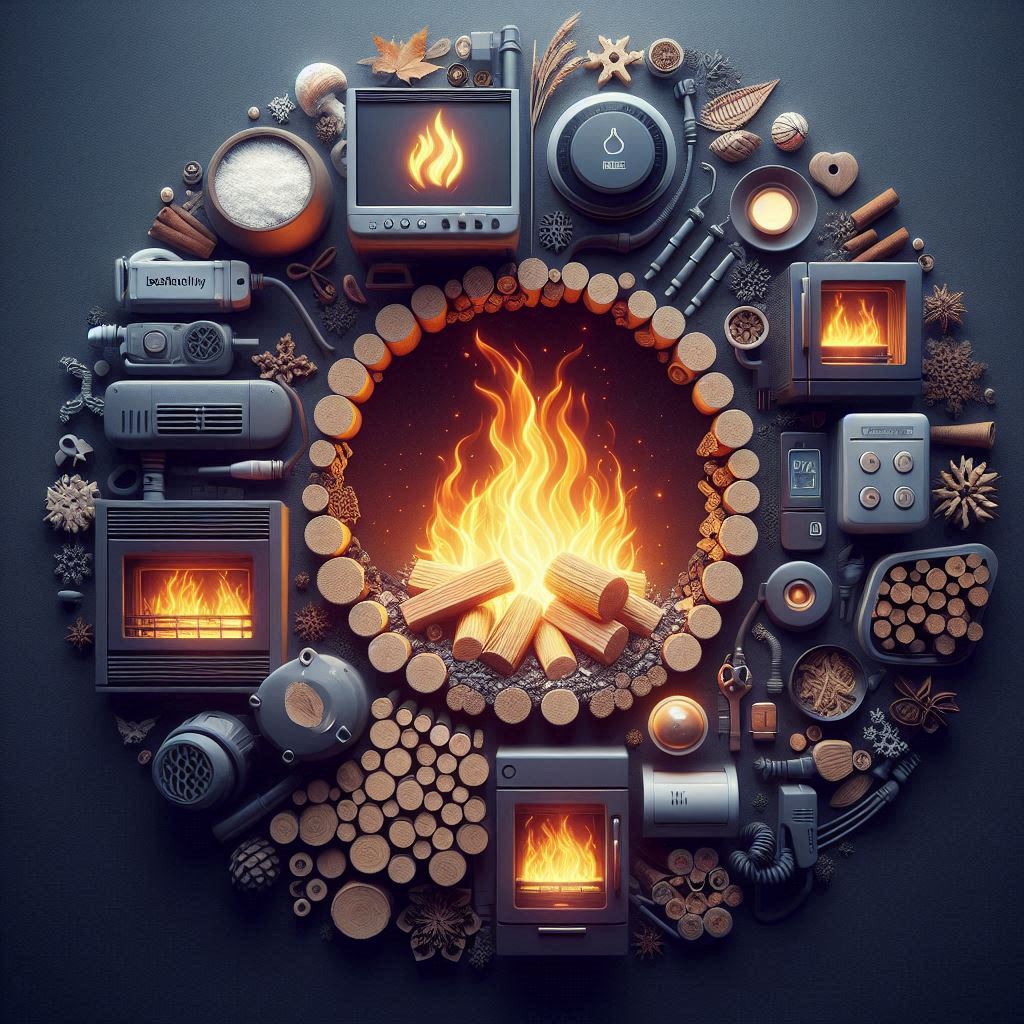The hearth, once a simple symbol of warmth and tradition, is undergoing a high-tech and sustainable evolution. The global hearth market is embracing digital innovation, eco-friendly materials, and customizable designs, leading to renewed relevance in modern homes and commercial spaces. As the market expands, segmentation by fuel type, product design, ignition technology, placement, and application provides insight into what’s driving this transformation.
Fuel Type: Cleaner, Smarter Heating Choices
The choice of fuel is central to the hearth’s transformation.
- Electric fireplaces are seeing rapid growth due to their convenience, zero-emissions operation, and integration with smart home ecosystems. With no need for ventilation, they’re ideal for apartments and green-certified homes.
- Gas fireplaces and stoves remain a dominant category, favored for their clean-burning efficiency, remote control features, and consistent heat output. Many now include smart thermostats and app-controlled ignition.
- Wood-burning hearths, though traditional, are being reinvented with cleaner combustion systems to meet stringent environmental regulations. Catalytic technology and low-emission certifications are helping wood retain its appeal.
- Pellet stoves and inserts are gaining traction for their eco-efficiency and renewable fuel source. Their programmable controls and steady heat output make them a sustainable yet high-performance alternative.
Download PDF Brochure @
https://www.marketsandmarkets.com/pdfdownloadNew.asp?id=37538589

Product Type: Expanding Beyond Fireplaces
While fireplaces continue to be the emotional centerpiece of homes, other product categories are making waves:
- Stoves, particularly freestanding and compact models, are ideal for smaller or off-grid homes. Innovations in design and material are making them both decorative and functional.
- Inserts are becoming a favorite for renovation projects, allowing homeowners to upgrade older fireplaces with modern, energy-efficient systems without a full rebuild.
Ignition Type: A Shift Toward Convenience
The market is witnessing a clear shift from standing pilot ignition systems to electronic ignition. Electronic ignition not only enhances energy savings by eliminating constant pilot lights but also supports features like remote activation, programmable timers, and mobile app integration. This is crucial in a market increasingly driven by smart-home compatibility and automation.
Placement: Custom Hearths for Every Space
The concept of where a hearth can be placed has expanded significantly:
- Indoor hearths remain dominant, but the outdoor category is booming as homeowners invest in patios, decks, and backyard lounges. Fire pits and outdoor fireplaces are now key features in luxury landscaping.
- New placements include multi-sided, wall-mounted, and corner installations, maximizing both form and function, especially in urban or space-constrained settings.
- Design and Vent Availability: Tailored to Aesthetic and Structural Needs
Design is no longer one-size-fits-all. Homeowners can choose from: - Traditional or contemporary designs, with materials ranging from stone and brick to glass, steel, and ceramic.
- Ventless options, especially in electric and bioethanol models, allow installation flexibility in spaces without chimneys or ducts.
- Direct vent systems in gas models continue to dominate where efficiency and air quality are prioritized.
Application: Residential Comfort to Commercial Ambience
Residential use leads the market, especially in North America and Europe, where hearths remain a key home comfort feature. Smart connectivity and sustainable fuels are influencing purchasing decisions.
Commercial installations are growing, particularly in hospitality and retail. From hotel lobbies and rooftop lounges to spa retreats and open-air restaurants, hearths are used to create a welcoming ambiance while supporting eco-design goals.
Final Thoughts
The future of the hearth market is being shaped by a perfect storm of smart innovation, sustainability, and design diversity. From fuel efficiency to digital ignition and placement flexibility, today’s hearth products serve both function and lifestyle.
Whether it’s a sleek, electric wall-mounted fireplace in a smart apartment or a pellet-burning stove in a sustainable off-grid cabin, the hearth continues to evolve—remaining the emotional and literal heart of any space. The market’s ability to adapt across multiple categories ensures that hearths will remain relevant and in demand for years to come.
Frequently Asked Questions (FAQ) – Hearth Market
1. What is driving growth in the global hearth market?
The hearth market is growing due to increasing demand for smart home features, eco-friendly heating solutions, and stylish, space-efficient designs. Consumers are also investing more in home comfort and ambiance, especially post-pandemic, which has boosted indoor and outdoor hearth installations.
2. What are the most popular types of hearths by fuel type?
-
Electric hearths are gaining popularity for their ease of use and clean operation.
-
Gas hearths remain widely used for their consistent heating and remote control options.
-
Wood-burning models are evolving with cleaner combustion technology.
-
Pellet hearths are rising in demand due to their renewable fuel source and heating efficiency.
3. How are hearth products categorized?
Hearth products are generally grouped into:
-
Fireplaces – built-in or wall-mounted for indoor/outdoor use
-
Stoves – freestanding units ideal for compact or off-grid setups
-
Inserts – retrofit solutions for upgrading existing fireplaces
